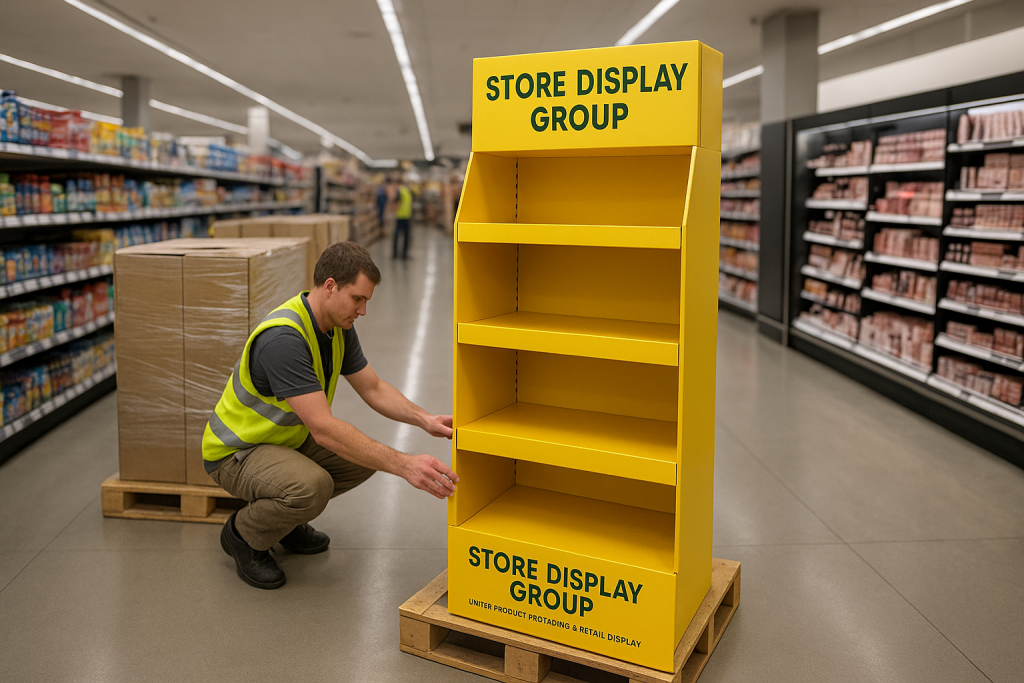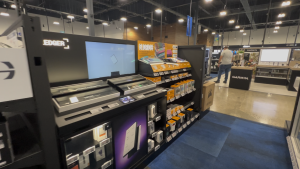Behind every eye-catching in-store display is a long journey that combines creativity, precision, and collaboration. At Store Display Group, we believe that every successful retail display tells a story—not just of the brand it represents, but of the craftsmanship and expertise behind it.
Here’s a look at the full lifecycle of a retail display, from concept to the final moment it meets the shopper on the sales floor.

1. Concept and Design
Every display starts with a question: How do we capture the shopper’s attention?
Our design team begins by understanding the brand’s goals, product features, and target retail environment. Using 3D modeling, material studies, and color psychology, we craft a design that balances beauty, function, and compliance with retailer guidelines.
At this stage, close collaboration between brand, designer, and engineer ensures the creative vision can be transformed into a practical, manufacturable solution.
2. Prototyping and Testing
Before production begins, the display undergoes a prototype phase. This is where ideas turn tangible. The prototype helps verify:
- Structural stability under load and transport conditions
- Material compatibility for durability and sustainability
- Assembly efficiency for in-store setup
- Visual accuracy of colors, finishes, and brand elements
For global clients, this stage also includes packaging optimization tests to ensure displays arrive safely—whether shipped to a club store in the U.S. or a retail chain in Europe.
3. Mass Production and Quality Control
Once approved, the display moves into full-scale production at our facilities. This stage requires precision and consistency. Our manufacturing team monitors every detail—from die-cutting and welding to screen printing and lighting integration.
Quality control checks are performed at every step to maintain consistency across thousands of units. Each display must meet Store Display Group’s standards for structure, finish, and safety before leaving the factory.
4. Packaging and Logistics
A critical yet often overlooked part of the retail display lifecycle is how it travels. Displays are engineered for flat-pack or pre-pack solutions, maximizing shipping space while minimizing cost and damage risk.
Our logistics team coordinates export documentation, carton labeling, and retailer-specific pallet requirements to ensure seamless delivery—whether it’s a full-container shipment to a U.S. warehouse or direct-to-store delivery in Asia.
5. In-Store Installation and Shopper Experience
Once in store, the display finally fulfills its mission: capturing shopper attention.
Pre-packed displays allow retailers to unbox and sell immediately, while modular systems enable quick assembly for seasonal rotations.
This stage closes the loop—everything from the first design sketch to the final shopper interaction now works together to create a complete brand experience.
Conclusion
The lifecycle of a retail display is a journey of innovation, precision, and collaboration. From the first concept to the final in-store execution, every step matters in transforming a simple idea into a retail success story.
At Store Display Group, we don’t just make displays—we manage their entire lifecycle, ensuring that every product we deliver performs beautifully, efficiently, and sustainably in the marketplace.


